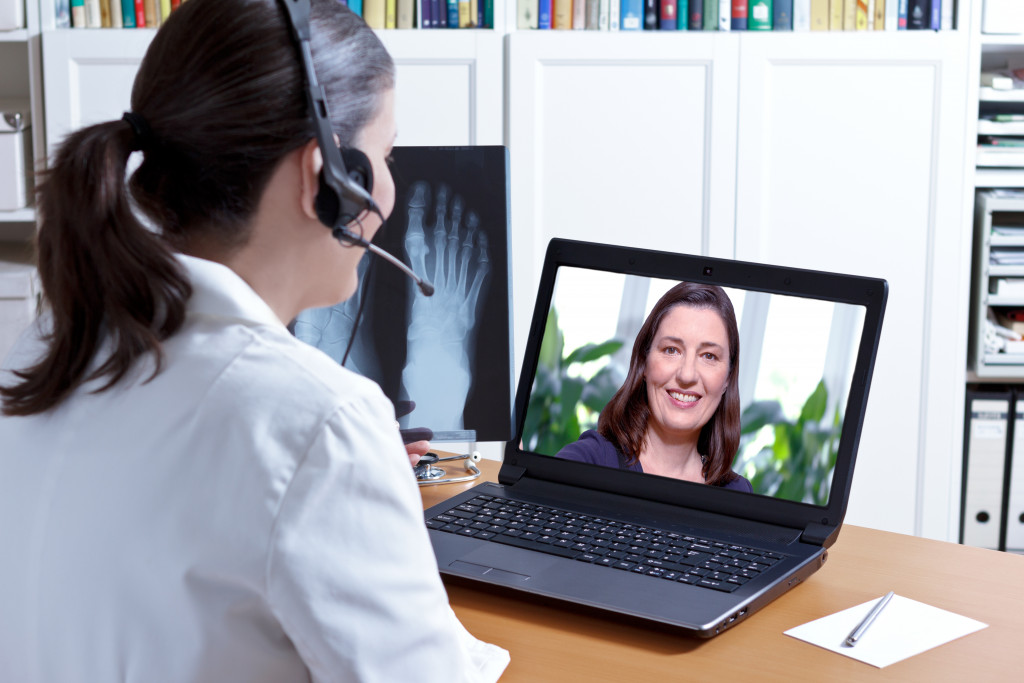The healthcare industry plays an important role in the lives of the people and the economy. It provides employment and contributes to the country’s GDP. Of course, they also make the lives of the people easier by giving them access to quality healthcare services.
The past year has been hard for everyone, especially for people in the healthcare industry. The demand for healthcare has shown how resilient and innovative the industry is. While other industries took their time to implement changes to adapt to the demands of the pandemic, the healthcare industry had to catch up real quick.
The need for health services significantly increased. Pharmaceutical research teams, for example, were in a race against time in developing a vaccine against the new coronavirus. Doctors and nurses had to work with the shortage of supplies, beds, and personal protective equipment. The shortage of staff also brought another problem as more and more succumbed to the claws of the virus, resulting in overworked medical personnel.
Although the challenges were great, maintaining the availability of essential healthcare services is a must. Preventive and curative services must remain available to those who seek them. Children, seniors, and those with chronic diseases need uninterrupted access to these services.
The Rise Of Telemedicine

Telemedicine has been around for some time. The pandemic has made it even more popular. It is defined as the use of technology to provide remote health care and services. It allows doctors to provide care through video conferencing or phone appointments. Telemedicine offers patients a safer alternative to conventional preventive and curative care amidst the health risks brought by the Corona Virus.
The use of telemedicine has seen unprecedented growth in the past year. From 1% of primary care virtual consultations in February 2020, it rose to 43.5% in April 2020. It is setting a whole new environment for medical care and services. And it looks like it is here to stay.
-
It is convenient and practical.
The convenience, comfort, and practicality that telemedicine brings are hard to ignore. You do not have to drive to your medical practitioner’s clinic. You don’t have to wait for hours in the waiting room.
Virtual consultations are also ideal for follow-ups. In a study by the Massachusetts General Hospital, 79% of their patients in their TeleHealth Program felt that a virtual video follow-up was more convenient than the traditional follow-up visit to the doctor. It made scheduling follow-ups easier for both the patient and the doctor.
For instance, you can consult your dentist first through teledentistry instead of visiting their dental clinic. Follow-up consultations after a dental operation can also be done safely and effectively through two-way video conferencing.
-
It helped control the spread of diseases.

The Corona Virus can easily be passed on from person to person through infected respiratory droplets. This makes going outside extremely risky for people that are immunocompromised. A quick visit to your medical practitioner can expose you, increasing your risks of contracting the virus.
It also provides medical practitioners a safe means of screening a patient first before they schedule a face-to-face visit. It helps not just the patient but the other patients as well, especially those who are elderly and are pregnant. If the patient is suspected of having an infectious disease, the patient and the doctor can take precautions should a face-to-face visit is necessary for confirmatory tests.
-
It helps medical practitioners provide an accurate assessment.
In a video conference, your doctor will have a glimpse of your environment. They can see the state of your environment and have an idea of how you take care of yourself. If you are having allergies lately, an allergist may see the clues of what triggered the allergy based on what he or she sees behind you.
-
It provides immediate care and support.
Telemedicine gives people who have no access to nearby clinics immediate medical care and support. People who are alone and cannot drive themselves can take advantage of the technology to seek curative service.
Telemedicine As A Standard Healthcare Service
Now that people have experienced the benefits and convenience of telemedicine, there may be no going back. With easier access to healthcare, it will certainly not go away with the pandemic. It redefined patient experience, as well as that of the medical practitioner as well. It provides faster diagnosis and safer access to preventive care, making it the better option for many patients. Those who need immediate onsite attention will have to contend with shorter lines in the waiting room.
While some may remain doubtful of the effectiveness of telemedicine services, its benefits surely cannot be denied. As technology evolves, the industry should also adapt to create a better experience for everyone.
Health institutions that still do not have the technology should add telemedicine as part of their services. It will not only improve customer experience but will also add a new revenue source.

